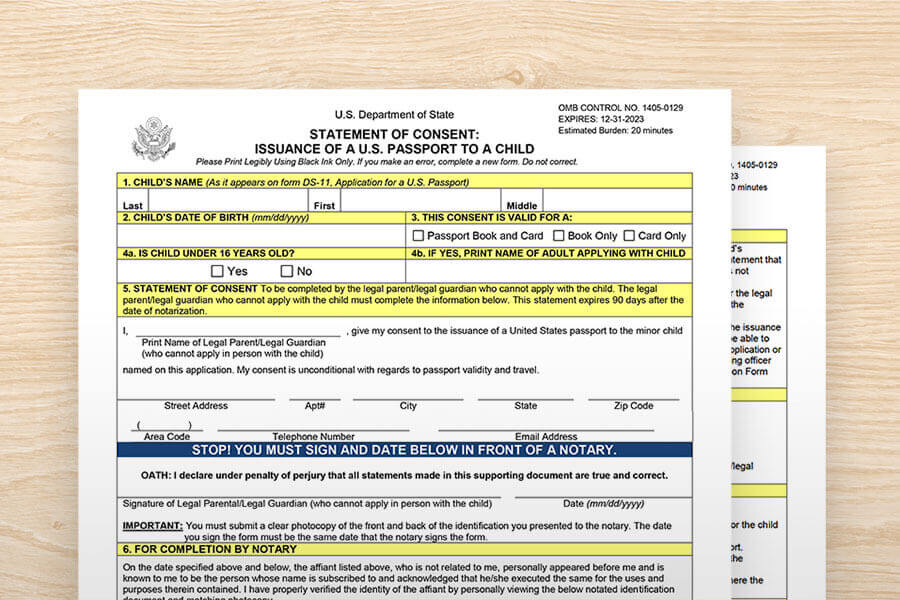
Updated 4-8-24. Many government forms require notarization and come with preprinted notarial wording. However, sometimes wording on a government document doesn't meet the requirements of your state's Notary laws.
The agency may be unaware of your state's specific Notary requirements, or the form could be outdated, missing critical information, or contain other errors that can cause problems down the line. Therefore, you need to be able to recognize issues with Notary certificates and know how to fix them.
Fixing errors in notarial certificates on government documents
The only way to identify problems with government-issued documents is to be familiar with your state’s Notary requirements, including the types of notarial acts you may perform and the correct certificate wording.
For starters, examine the document and ask yourself four basic questions:
- Where? Does the document include a space to record the location where the notarization takes place (often indicated by the words “State of...” and “County of...”)?
- When? Is there a space in the notarial wording to record the date of notarization? (Make sure the date is accurate.)
- Who? Does the wording contain a blank to insert the name of the person whose signature is being notarized, or to whom the Notary must administer the oath or affirmation?
- What? What type of notarial act does the form require you to perform, and are you authorized by your state to perform it? Stated another way, what, exactly, is the notarial wording asking you to certify and is it a certification you can make as a Notary?
If you are unable to answer one or more of these questions, you should halt the notarization until the question is answered.
You should ask the signer to contact the issuing or receiving agency for alternative solutions, such as using a notarial certificate authorized by your state. If that doesn’t work, the signer may need to seek the assistance of an attorney.
Two problem government documents for Notaries
To illustrate, we'll highlight two of the more common problem forms: the U.S. Department of State passport application for a minor and a Thrift Savings Plan document.
Passport Application For A Minor: (Updated 10-26-21) The current version of the U.S. State Department Form DS-3053 (Statement of Consent: Issuance of a Passport to a Minor) requires a Notary to perform a jurat or verification upon oath or affirmation for a document signer. Notaries in states where the certificate wording printed on the DS-3053 meets state law requirements may notarize the document. However, the California Secretary of State's office has confirmed that California Notaries may not complete a Form DS-3053 without attaching a California jurat form.
Thrift Savings Plan: (Updated 10-26-21: According to a government announcement, TSP-70 forms dated prior to September 2019 are obsolete and no longer in use by government agencies.) This document fails the “Where” question. It requires an acknowledgment and contains acknowledgment wording that complies with most states' laws. However, there isn't space for you to record where the notarization took place, nor does it allow room for you to affix your seal. In addition, the document states that no additional certificates will be allowed, meaning you can't complete and attach an acceptable acknowledgment form with a proper venue statement.
These examples show that you should not assume that the document preparer will always get it right. Instead, trust your own training and Notary knowledge.
Remember, if you have questions or concerns about a notarization, you can always contact the NNA Hotline. NNA counselors may have experience with the particular document in front of you and provide an acceptable solution.
Related Articles:
Handling requests to notarize out-of-state documents
Notarizing documents from other countries